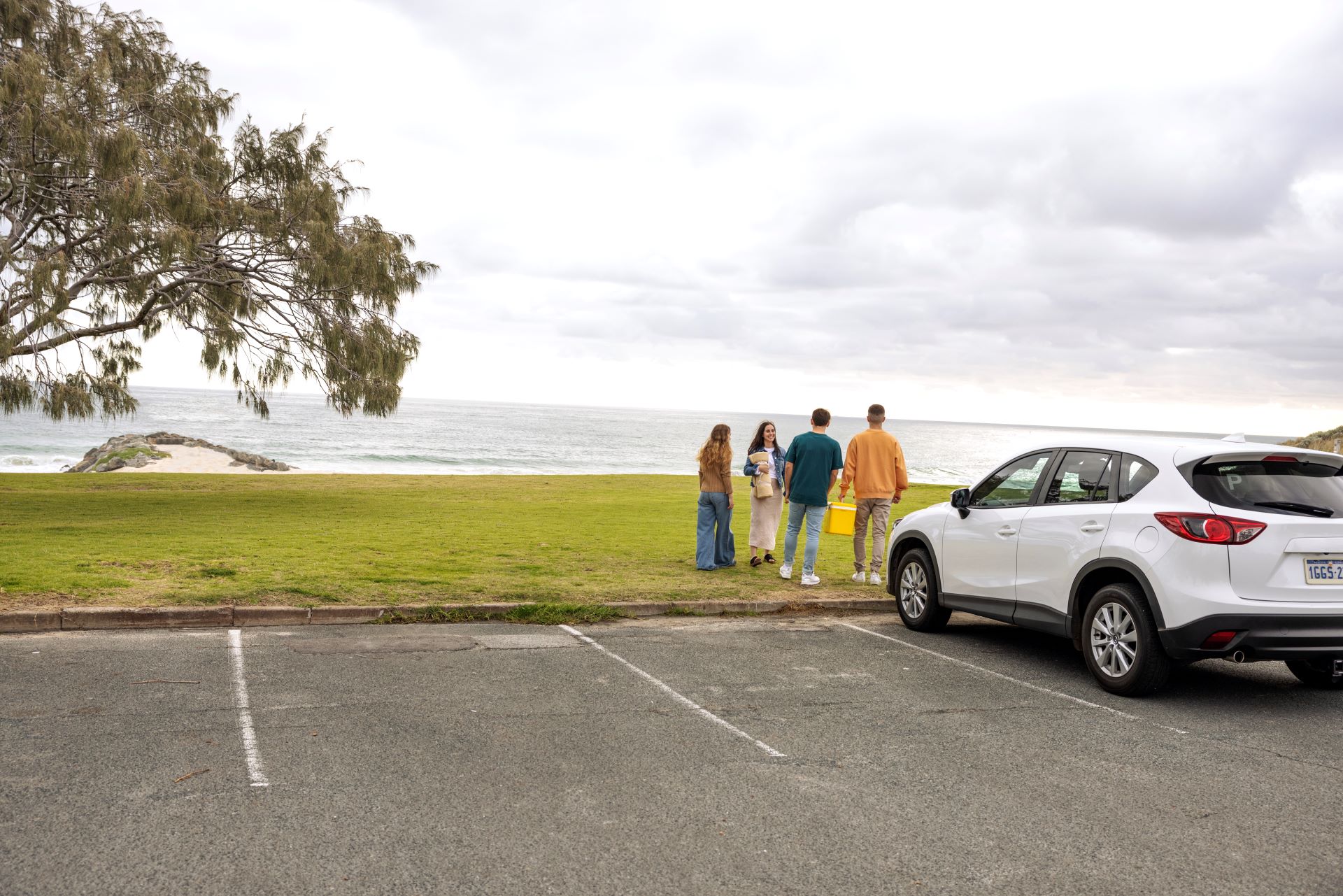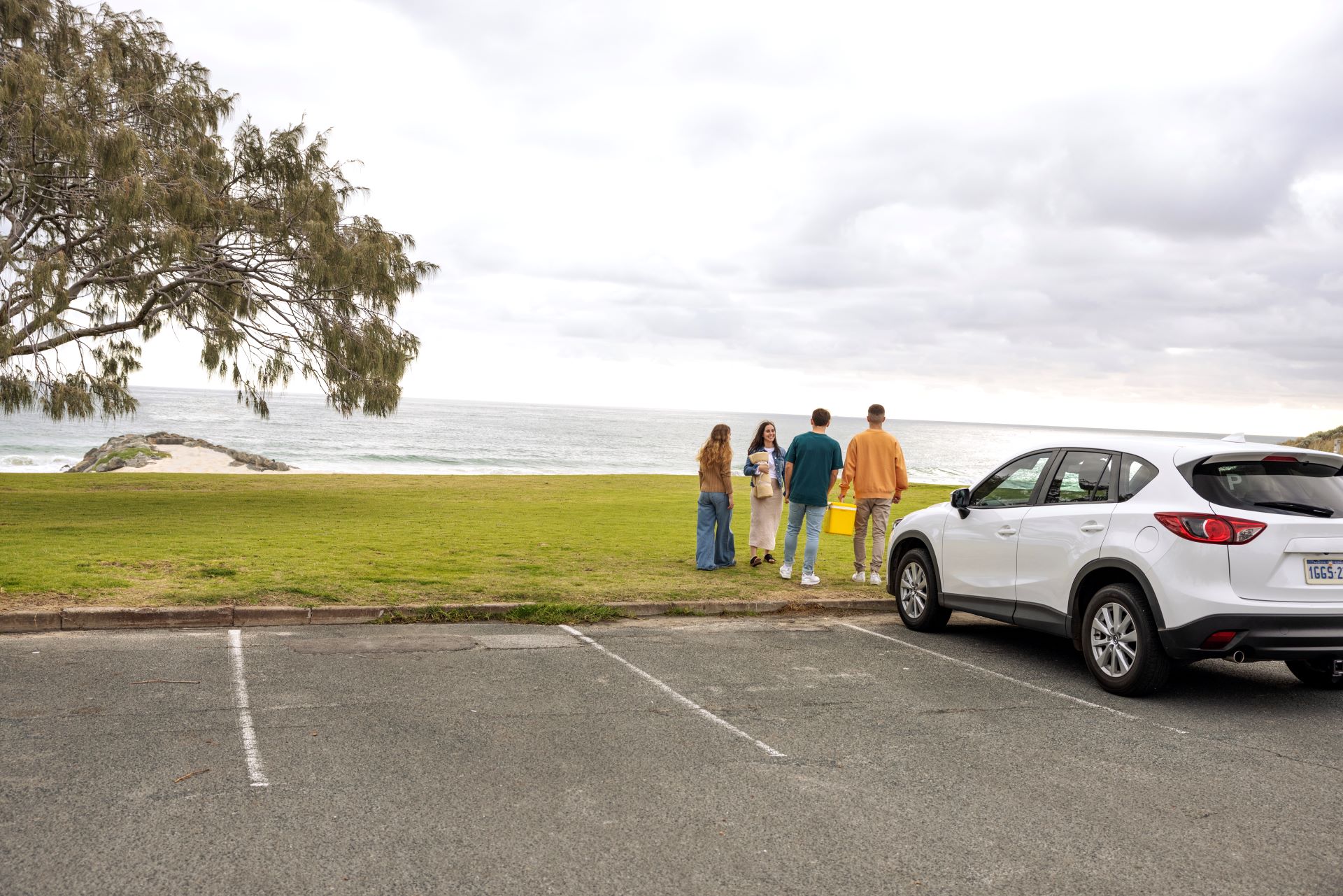
On and around the roads at Leavers
Here are some tips on how to navigate being on and around the roads at Leavers.
Young drivers are at higher risk of road crashes, especially when driving at night, in rural areas, or under the influence of alcohol. According to Road Safety Commission (PDF 1MB), young drivers aged 17-19 experience the highest rate of road trauma of any age group. In fact, it’s around double the WA figure.
Look out for each other
Look after your friends. If you’re driving, you’re responsible for getting your passengers there and back safely. Be aware of the risks and help to minimise them with these safe driving tips.
- Share the driving: For longer trips, sharing the driving can make the journey safer and more enjoyable. Rotating drivers helps keep everyone alert and gives others a chance to gain experience driving on country roads
- Take a break: To reduce the risk of fatigue, plan breaks every two hours. Check out our list of top places to stop.
- Limit distractions: Red P-platers are limited to carrying one passenger in their vehicle. Some exemptions apply. The fewer passengers you have, the easier it is for the driver to stay focused. According to a study, teenage drivers are more likely to crash when they have passengers. The crash risk is highest when multiple passengers are present.
Don’t be tempted by your phone. Make sure it’s out of your reach and let your passenger be the navigator and select the tunes. - Obey the laws: Speeding, drink and drug driving, using a mobile phone or not wearing a seatbelt are not only illegal; they’re extremely risky driving behaviours.
- Drive to the conditions: The condition of country roads may differ from what you’re used to. On gravelly or loose road surfaces, it takes longer for your car to stop. It’s easier to lose control around bends. Dirt roads can be dangerously slippery when wet. In short, take extra care and slow down.
- Be aware of animals and heavy vehicles: When driving near trucks and buses, be aware of they will have larger blind spots than the average car meaning they may not be able to see you. Be cautious when driving next to or behind a truck and allow for their extra braking distance. Look out for wildlife and try to avoid driving at dawn, dusk or night-time where the chance of hitting one is higher.
What to do if you find a sick or injured animal on the side of the road.
What to do if your car breaks down on the way to Leavers
Breaking down can be stressful, especially if it happens on a rural road with limited phone service or emergency stops. However, staying calm and following a few key steps can help you stay safe until assistance arrives. Here’s what to do:
- Safety first: Immediately pull over to a safe location off the road or into the emergency lane if available. Park as far to the left as possible. Avoid stopping on bends or crests where visibility may be poor.
- Hazard lights on: Turn on your hazard lights to alert other drivers, and if it’s dark or visibility is low, raise the bonnet and switch on your parking lights. These steps signal to other drivers that you need extra space and make it easier for roadside assistance to locate you.
- Exit with caution: Only exit the vehicle if it’s safe to do so. If you’re on a busy road or if there’s any risk from passing traffic, remain inside the vehicle with your seatbelt fastened. If you do need to get out, exit from the side facing away from the road. Position yourself at a safe distance from traffic, preferably behind a barrier or well off the road if one is available. It’s safer to stay in the car in some situations, particularly on narrow or high-speed roads.
- Call for Assistance: Contact your roadside assistance provider (if it’s RAC, call 13 11 11) or a towing service as soon as you’re in a safe place. If you have the RAC Go app, you can call for help with the click of a button.
For assistance on major roads, use emergency phones along the roadside, or call Main Roads WA on 138 138 if you’re on a main road. - Stay calm and patient: In rural areas, help may take longer to arrive, so be prepared to wait patiently. Use this time to stay hydrated and avoid excessive phone use to conserve battery life. If possible, let someone else know your location and status, and stay close to the car in case help arrives unexpectedly.
How passengers can contribute to a safe journey
Passengers play an essential role in maintaining road safety and supporting the driver. A few small actions can go a long way in keeping everyone safe:
- Minimise distractions: As a passenger, keep noise levels down to help the driver stay focused. This means setting a comfortable volume for music and avoiding loud or distracting conversations. It’s important that the driver can concentrate fully on the road and be able to hear any sounds from the car or the surroundings that might indicate a hazard.
- Be alert to fatigue: If the driver shows any signs of fatigue—such as yawning, drifting in their lane, or struggling to keep their eyes open—encourage them to take a break. Offering to share the driving (if you’re licenced) can make a big difference and ensure everyone reaches their destination safely.
- Speak up if you feel unsafe: Don’t hesitate to voice your concerns if you feel that the driver is engaging in risky behaviours. Whether it’s speeding, handling their phone, or showing signs of tiredness, speaking up might feel awkward but can make all the difference. Remind the driver that safety comes first and suggest stopping for a break if necessary.
Staying safe as a pedestrian
While you’re at Leavers, you may be walking around different locations, and you should be safe doing so.
Following a few simple precautions can protect you on foot, especially when visibility is low.
- Use footpaths where possible: Stick to designated footpaths whenever they’re available. Walking along the road without a footpath can be dangerous, especially on country roads where drivers may not expect to encounter pedestrians.
- Face oncoming traffic: If there are no footpaths, walk on the far-right side of the road, facing oncoming traffic. This positioning allows you to see approaching cars, giving you time to step further away from the road if needed.
- Stay aware and avoid distractions: Avoid using your phone while walking near traffic. Texting or scrolling can distract you from your surroundings and increase the risk of an accident. Stay alert, especially when crossing roads or walking in areas with limited lighting.
- Safety at night: When visibility is low walk under streetlights or bring a torch with you. Look out for your mates and stay together.
Leavers is about having fun with your friends, a safe trip there and back is essential for making it memorable for all the right reasons.
Read more of our learning to drive articles.

